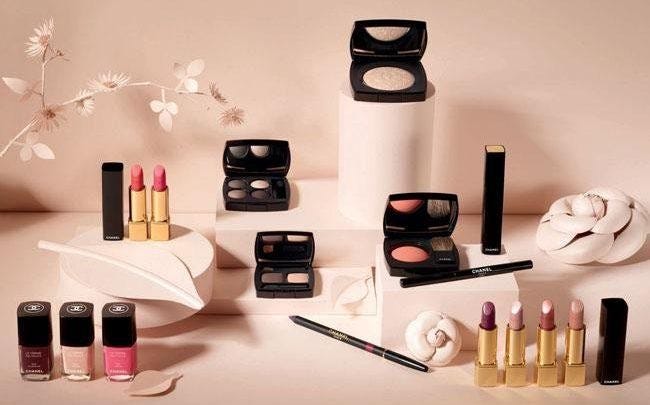Luxury Cosmetics Market Size, Share, Trends, Analysis, Growth 2030

The luxury cosmetics market is a segment of the broader beauty and personal care industry, focusing on high-end, premium products that offer superior quality, exclusive ingredients, and sophisticated branding. This market caters to consumers seeking indulgent and high-performance beauty solutions.

Get a Free Sample : https://www.zionmarketresearch.com/sample/luxury-cosmetics-market
Key Aspects of the Luxury Cosmetics Market
1. Market Overview
- Definition: Luxury cosmetics refer to high-end beauty products, including skincare, makeup, and fragrances, that are distinguished by their premium ingredients, packaging, and brand prestige.
- Market Size: The luxury cosmetics market has been experiencing robust growth, driven by increasing consumer spending on premium products, rising disposable incomes, and the growing influence of social media and celebrity endorsements.
- Geographic Scope: The market is global, with significant activity in regions such as North America, Europe, Asia-Pacific, and the Middle East. Each region exhibits distinct preferences and trends in luxury beauty products.
2. Market Drivers
- Rising Disposable Income: Higher disposable incomes in emerging and developed markets are enabling more consumers to invest in luxury beauty products.
- Increased Focus on Self-Care: A growing emphasis on personal wellness and self-care is boosting demand for high-quality, luxurious beauty products.
- Influence of Social Media and Influencers: Social media platforms and beauty influencers drive trends and create demand for luxury cosmetics through reviews, tutorials, and endorsements.
- Innovations in Product Development: Advanced formulations, exclusive ingredients, and innovative packaging contribute to the appeal of luxury cosmetics.
3. Market Challenges
- High Competition: The luxury cosmetics market is highly competitive, with numerous established brands and new entrants vying for consumer attention.
- Economic Downturns: Economic fluctuations and downturns can impact consumer spending on non-essential luxury items.
- Counterfeiting Issues: The presence of counterfeit products in the market poses a challenge to brand integrity and consumer trust.
4. Market Segmentation
- By Product Type:
- Skincare: Includes high-end moisturizers, serums, anti-aging treatments, and specialty skincare products.
- Makeup: Encompasses luxury foundations, lipsticks, eyeshadows, and other cosmetics known for their premium quality and performance.
- Fragrances: High-end perfumes and colognes from prestigious brands that are often positioned as luxury items.
- Haircare: Premium hair treatments and styling products designed to offer superior results and ingredients.
- By Distribution Channel:
- Online Retail: E-commerce platforms and brand websites are increasingly popular for purchasing luxury cosmetics, offering convenience and a wide range of products.
- Specialty Stores: High-end beauty boutiques and department stores provide a curated selection of luxury cosmetics and personalized service.
- Pharmacies/Drugstores: Some luxury cosmetics are available in high-end pharmacies or drugstores, often with dedicated sections for premium products.
- By Consumer Demographics:
- Age Group: Luxury cosmetics are marketed to various age groups, including millennials, Generation X, and baby boomers, with different products tailored to their specific needs.
- Gender: While historically focused on women, there is a growing segment of luxury cosmetics targeted towards men, including skincare and grooming products.
5. Key Players
- L’Oréal Luxe: A leading player in the luxury cosmetics market, with brands like Lancôme, Yves Saint Laurent, and Giorgio Armani Beauty.
- Estée Lauder Companies: Offers high-end products under brands such as Estée Lauder, La Mer, and Clinique.
- Chanel: Known for its premium skincare, makeup, and fragrance lines.
- Dior: Offers a range of luxury beauty products, including makeup, skincare, and fragrances.
- Gucci Beauty: A newer entrant in the luxury cosmetics space, known for its high-end makeup and fragrances.
6. Trends and Future Outlook
- Sustainability: Increasing consumer demand for eco-friendly and sustainable products is influencing the development of luxury cosmetics with recyclable packaging and ethical sourcing of ingredients.
- Personalization: Brands are offering personalized beauty solutions, such as customized skincare routines and bespoke fragrances, to cater to individual preferences.
- Technological Integration: Innovations such as augmented reality (AR) for virtual try-ons and advanced skincare technologies are shaping the future of luxury cosmetics.
- Expansion in Emerging Markets: Growing wealth and urbanization in emerging markets, particularly in Asia-Pacific, are driving increased demand for luxury beauty products.
Directly Purchase a copy of the report with TOC :
https://www.zionmarketresearch.com/toc/luxury-cosmetics-market
In summary, the luxury cosmetics market is thriving due to rising consumer affluence, a focus on self-care, and the influence of digital media. Companies are leveraging innovation, sustainability, and personalization to capture consumer interest and drive growth in this competitive sector.
Contact Us:
Zion Market Research212
USA/Canada Toll Free: 1 (855) 465–4651
Newark: 1 (302) 444–016611\
Web: https://www.zionmarketresearch.com/
Blog: https://zmrblog.com/
Read Other Report :
https://www.zionmarketresearch.com/report/pharmaceutical-isolator-market
https://www.zionmarketresearch.com/report/luxury-cosmetics-market
https://www.zionmarketresearch.com/report/enterprise-rights-management-solution-market
https://www.zionmarketresearch.com/report/industrial-air-chiller-market
https://www.zionmarketresearch.com/report/dewatering-pumps-market
Comments
Post a Comment